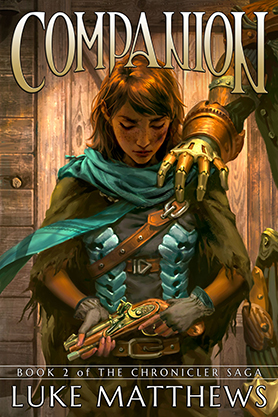 Story by Roy Thomas
Story by Roy Thomas
Art by Mike Hawthorne
One of two Conan releases this Wednesday, Road of Kings follows an earlier tale of the Cimmerian as he escorts the princess Olivia along the titular road across Hyboria, back to her home in Ophir. Issue 5 picks up after Olivia’s abduction at the hands of the scoundrel Fharos, who’s looking to claim a reward for her return to her father, and Conan’s pursuit of the pair.
Given a chance to stand solely on its own merits, Road of Kings #5 could hold up as a middling entry in the Conan saga; a mildly entertaining diversion. Unfortunately for this book it released alongside the clearly superior King Conan: The Scarlet Citadel #6, and suffers in the comparison. Where Timothy Truman’s narration and dialogue easily flow around Hyboria’s inhabitants, Roy Thomas’s language sometimes feels stilted and artificial. It’s a small complaint, though, and one made more evident by the contrast.
This issue’s story is entirely setup for an inevitably bloody finale, which makes it feel a little plodding. A particular non-encounter with a typically fantastical beast was much more filler than adventure, and was indicative of the books overall pacing. Hawthorne’s art is passable if a bit boring, and feels like a standard Dark Horse “b-team” book. It’s not an overwhelmingly negative feeling, but I can’t really praise this issue in any meaningful way either.
If you’re a Conan completist and just want more Conan, pick this one up. If you have to choose between this week’s Conans, go with Truman’s more consistently solid work and leave this one by the wayside.

